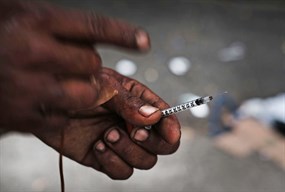The Opioid Crisis Isn’t White
Contrary to media portrayals, overdose deaths are ravaging communities of color.
7 Mar 2019Last April, The Baltimore Sun ran an op-ed essay by a woman in mourning. Her sister, a “middle-class suburban mom,” had become addicted to alcohol and opioids and died. Two years earlier, The Wall Street Journal published the names and photographs of some of the 300,000 Americans who had died of opioid overdoses since the 1990s. Smiling faces stared back at the reader with eyes full of promise. The families of the dead described how their once-vibrant loved ones had fallen into opioid use, how an injury or divorce led to medication, which then spiraled into addiction. In 2016, the NPR podcast “Embedded” told the heartbreaking story of a nurse with three children who hurt her back at work and was soon hooked on opioids.

It’s notable how this kind of coverage emphasizes the humanity of opioid users. Phrases like “introduced to,” “caused by” and “fell into” are increasingly used to describe pathways to addiction, and we often hear the perspectives of loved ones who vouch for the lives of victims were before they became addicted. Something else stands out, too: It seems the majority of the victims whose stories have been told in recent years are white. This has led to journalists and others pointing out the stark contrast between the kind of compassionate treatment opioid users receive now and the contempt that dominated reports about the largely black victims of the crack epidemic of the 1980s and 1990s.
